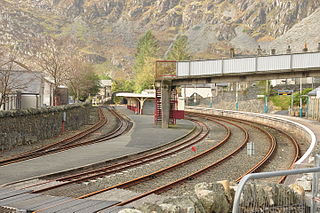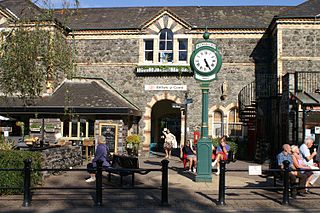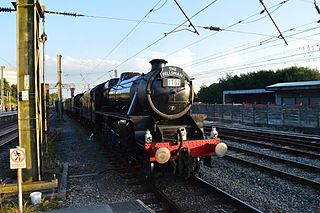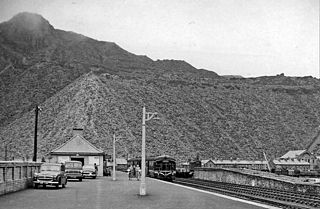| LMS 8151 | |||||||||||||||||||||||||||||||||||||||
|---|---|---|---|---|---|---|---|---|---|---|---|---|---|---|---|---|---|---|---|---|---|---|---|---|---|---|---|---|---|---|---|---|---|---|---|---|---|---|---|
 48151 approaching Aisgill | |||||||||||||||||||||||||||||||||||||||
| |||||||||||||||||||||||||||||||||||||||
| |||||||||||||||||||||||||||||||||||||||
| |||||||||||||||||||||||||||||||||||||||
| |||||||||||||||||||||||||||||||||||||||
LMS Stanier Class 8F 8151 (British Railways No. 48151) is a preserved British steam locomotive.
| LMS 8151 | |||||||||||||||||||||||||||||||||||||||
|---|---|---|---|---|---|---|---|---|---|---|---|---|---|---|---|---|---|---|---|---|---|---|---|---|---|---|---|---|---|---|---|---|---|---|---|---|---|---|---|
 48151 approaching Aisgill | |||||||||||||||||||||||||||||||||||||||
| |||||||||||||||||||||||||||||||||||||||
| |||||||||||||||||||||||||||||||||||||||
| |||||||||||||||||||||||||||||||||||||||
| |||||||||||||||||||||||||||||||||||||||
LMS Stanier Class 8F 8151 (British Railways No. 48151) is a preserved British steam locomotive.
8151 was built at Crewe Works in 1942 by the LMS as one of the 8F Class. Following nationalisation in 1948, 40000 was added to the class's original numbers and so in 1949 it was renumbered to 48151.
The engine originally was allocated to Grangemouth TMD and spent over thirteen years at Grangemouth before being transferred to Canklow in July 1955. Other sheds the engine was allocated to included Staveley in January 1963, Edge Hill (8A) in April 1964, and finally Northwich in March 1966.[ citation needed ] The engine remained at Northwich for its remaining working career for British Railways until January 1968, when it was withdrawn from service. [1] 48151 was one of the last 359 steam engines operating on British mainline railways, those still in service in 1968.[ citation needed ]
48151 was sold to Woodham Brothers scrapyard on Barry Island for in September 1968, and remained there until November 1975 when it was purchased for preservation.
48151 was based at the Embsay and Bolton Abbey Railway for a number of years, but its restoration was not completed there. It was then bought by David Smith and after its heavy restoration was completed in 1988 at Carnforth MPD, it was certified for mainline use and is currently operated by West Coast Railways (WCR) working steam charters across the UK, running on lines never visited before by an 8F.[ citation needed ]


In November 1995, it was loaned for a short time to Tunstead Quarry to haul a 975-ton train of hopper wagons, and five years later in December 2000 it als worked a special one-off freight train along the Settle and Carlisle line from Hellifield to Ribblehead Quarry where the hopper wagons were loaded. It then worked the loaded train on from Ribblehead Quarry to Carlisle.[ citation needed ] Also in 2000, it made its first operational visit to a heritage railway, when it visited the Great Central Railway for a brief period in June of that year, as well as making a brief visit back to Staveley the following month, now the Barrow Hill Engine Shed.
In October 2003, 48151 worked its first train over Shap Summit since the end of steam in 1968, the charter was operated by WCR and ran from Carnforth to Carlisle via Shap both ways.
In August 2008, 48151 worked the Liverpool to Manchester leg of the Fifteen Guinea Special reenactment which was celebrating 40 years since the ending of steam on BR in August 1968, it was covering for 45110 as its mainline certificate had run out. This was also to be the first time since 1966 that 48151 had visited Liverpool since being allocated to Edge Hill.
In August 2010, it became the first member of its class to work over the Conwy Valley Line. The train was the Railway Touring Company's Welsh Mountaineer from Preston to Blaenau Ffestiniog running via Chester and Llandudno Junction, the section from Chester to Llandudno Junction being tender first due to the train reversing direction at the junction alongside the fierce 1 in 47 gradient in the Blaenau direction. The engine has visited the route on a number of occasions in July and August 2011, 2012, 2014 and 2018 with other trips being worked by 45231 The Sherwood Forester, 46115 Scots Guardsman and 61994 The Great Marquess.
In August 2019, 48151 hauled the Conwy Quest from Chester to Blaenau Ffestiniog via Llandudno Junction while double heading with 45690 Leander. [2] This trip was run to mark the re-opening of the Conwy Valley Line following a closure period due to damage inflicted from Storm Gareth which resulted in numerous washouts. [3] [4]
In April 2012, it worked the first steam railtour from Southport since 1995, the train in question being Compass Tours "Roses Express" which ran from Southport to York traveling out via Eccles and returning via Bolton. [5] [6] 48151 was also the first member of its class to visit the resort as no 8F's were allocated to Southport Derby Road MPD in steam days.
In May 2014, it made only its second appearance at a heritage railway when it alongside fellow 10A based engines 45699 Galatea and 46115 Scots Guardsman. The three engines travelled from Carnforth to Dereham on Thursday, 29 May in triple headed formation along with a set of coaches as most of the Mid-Norfolk Railway's coaches weren't vacuum braked. The three engines then ran at the MNR's West Coast Railways steam gala from Friday, 30 May to Sunday, 1 June and then on Monday, 2 June, the three engines returned to Carnforth once more travelling as a triple headed formation.
On 14 June 2014, it worked only its second train over Shap Summit for the first time since October 2003, the train this time being the Railway Touring Company's Cumbrian Coast Express that ran from London Euston to Carlisle. The 8F took over the train at Carnforth and worked northbound over Shap's 1 in 75 to Carlisle with the return leg being via Whitehaven and Grange-over-Sands on the Cumbrian Coast and Furness Lines.
In July 2018, its third Shap Summit train was the Railway Touring Company's Cumbrian Mountain Express that ran from London Euston to Carlisle on Saturday, 21 July. The engine's two previous trips up Shap was worked alon, but due to a restricted use of steam engines on Network Rail lines due to the hot weather at the time, 48151 was assisted by a Class 47 diesel No. 47237. The return route of this tour was via the Settle and Carlisle Line. [7] [8]
In March 2019, the Conwy Valley Line was temporarily closed following multiple washouts along the route inflicted by Storm Gareth. The damage from the storm had left sections of the line suspended in the air as the embankments had been washed away and other sections were under water which made the route unsafe for rail traffic. Following repair work to mark the reopening of the line "Transport for Wales Rail" in co-operation with "West Coast Railways" ran a train called "The Conwy Quest" which ran from Chester to Blaenau Ffestiniog via Llandudno Junction on Sat 3 Aug. [9] The load that was to be hauled on the day which was 9 coaches required the special to be double headed (the gradient being 1 in 40 in the Blaenau direction alongside the tight curves would be too much for the 8F to cope with alone). 46115 Scots Guardsman was the original second engine intended to work with 48151 however owing to a hot axlebox days before while on a test run following completion of its overhaul her place was taken by 45690 Leander.

The Conwy Valley line is a railway line in north-west Wales. It runs from Llandudno via Llandudno Junction to Blaenau Ffestiniog, and was originally part of the London and North Western Railway, being opened in stages to 1879. The primary purpose of the line was to carry slate from the Ffestiniog quarries to a specially built quay at Deganwy for export by sea. The line also provided goods facilities for the market town of Llanrwst, and via the extensive facilities at Betws-y-Coed on the London to Holyhead A5 turnpike road it served many isolated communities in Snowdonia and also the developing tourist industry. Although only a little over 27 miles (43 km) between Llandudno and Blaenau Ffestiniog, the journey takes over one hour, largely due to the sinuous and steeply graded nature of the route taken. Most of the stations along the line are treated as request stops.

Llandudno Junction railway station is a station serving the village of Llandudno Junction on the Crewe to Holyhead North Wales Coast Line. The station is managed by Transport for Wales Rail, although Avanti West Coast also serves it.

LMS Royal Scot Class 6115 Scots Guardsman is a preserved British steam locomotive. Built by the London, Midland and Scottish Railway (LMS) as a member of the Royal Scot Class, it was later operated by British Railways.

London, Midland and Scottish Railway (LMS) Jubilee Class No. 5690Leander is a preserved British steam locomotive.

The London and North Eastern Railway (LNER) Class K4 is a class of 2-6-0 steam locomotives designed by Nigel Gresley for the steep grades of the West Highland Line.

Betws-y-coed railway station is on the Conwy Valley Line, which runs between Llandudno and Blaenau Ffestiniog. It is situated 15+1⁄2 miles (24.9 km) south of Llandudno Junction.

Blaenau Ffestiniog railway station serves the slate mining town of Blaenau Ffestiniog, Wales, and is the passenger terminus of the Conwy Valley Line from Llandudno Junction. Transport for Wales Rail operate through services to Llandudno Junction and Llandudno. The station is a joint station with the narrow gauge Ffestiniog Railway, which operates primarily tourist passenger services to Porthmadog throughout most of the year. A feature of the standard gauge service is the availability on trains and buses of the popular "Gwynedd Red Rover" day ticket.

Roman Bridge railway station is a request stop passenger station in the Lledr Valley, Wales, on the Conwy Valley Line from Llandudno Junction to Blaenau Ffestiniog, which is operated by Transport for Wales Rail.

Dolwyddelan railway station is a passenger station in the Lledr Valley, Wales, on the Conwy Valley Line from Llandudno Junction to Blaenau Ffestiniog, which is operated by Transport for Wales Rail. It is located at Pentre-Bont across the river a few hundred yards from the centre of Dolwyddelan. The station is unmanned.

Tal-y-Cafn railway station is located at Tal-y-Cafn, Wales, on the Conwy Valley Line from Llandudno Junction to Blaenau Ffestiniog.
Compass Tours was a UK railtour organiser specialising in excursions with heritage diesel locomotives such as the Class 37, Class 40 and Class 47 and also using Steam Engines such as the LMS Black 5.

London, Midland and Scottish Railway (LMS) Jubilee Class No. 5699Galatea is a preserved British steam locomotive.

Trawsfynydd railway station served the village of Trawsfynydd, Gwynedd, Wales.

Tan-y-Manod railway station was a railway station approximately 1 mile (1.6 km) south of Blaenau Ffestiniog, in Gwynedd, North Wales.

The Fifteen Guinea Special was the last main-line passenger train to be hauled by steam locomotive power on British Rail on 11 August 1968 before the introduction of a steam ban that started the following day, the extra day added to allow for the movement of locomotive BR Standard Class 7 70013 Oliver Cromwell to Bressingham Steam Museum. It was a special rail tour excursion train organised for the occasion from Liverpool Lime Street via Manchester Victoria to Carlisle and back, and was pulled in turn by four steam locomotives during the four legs of the journey. The last scheduled standard gauge steam-hauled passenger services had run on 3 August 1968 from Preston. Steam continued to be used on the narrow gauge Vale of Rheidol Railway under British Rail, which was subsequently privatised in 1989.
The Scarborough Spa Express (SSE) is a regular summer heritage steam locomotive service between York and Scarborough. It is currently operated by the West Coast Railways, but has been operated in previous years by different companies, including the Railway Touring Company.

LNER Thompson Class B1 No. 61306 Mayflower is a 4-6-0 steam locomotive built in 1948 at the North British Locomotive Company to a design by Edward Thompson. It was employed for hauling mixed traffic trains on British Railways' Eastern, North Eastern, and Scottish Regions until it was bought for preservation in 1967, during which it was renumbered and given its current name.

LMS Stanier Class 5MT 4932, is a preserved British steam locomotive. It is one of 18 surviving members of the Black 5 class which had 842 members constructed by five manufacturers. 44932 is the sole remaining member of the class which was built at the LMS's Horwich Works.
Tyddyngwyn railway station was immediately north of the later Manod station in what was then Merionethshire, now Gwynedd, Wales.

Blaenau Ffestiniog North was the London and North Western Railway's (LNWR's) second passenger station in Blaenau Ffestiniog, then in Merionethshire, now in Gwynedd, Wales.